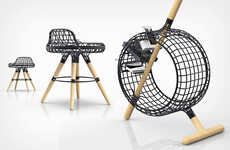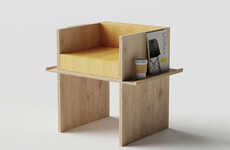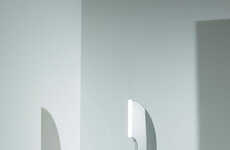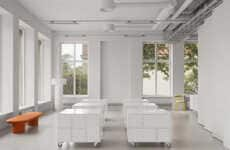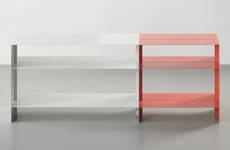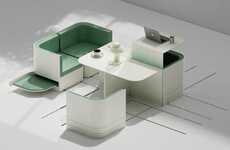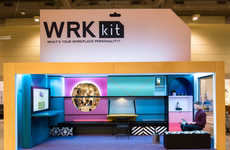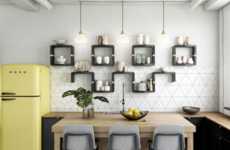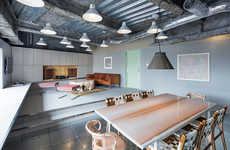
OS ∆ OOS Design Studio Created Its Matrix Project from Grid Structures
Amy Duong — January 22, 2018 — Art & Design
References: osandoos & design-milk
OS ∆ OOS is a design studio based in Eindhoven and has just unleashed its 'Matrix Project,' a unique light and bench with a metal grid structure. The design studio plays with juggling materials with forms and understanding the pieces in correlation to its surroundings. The Matrix Project first started as a concept that would enable an infinite amount of reconstruction and adaptations, basing the foundation on the concept of "form meets function," to create multiple concepts of adjustable constructions.
Utilizing a three-dimensional grid concept, the light and bench are crafted from steel linings that can be rearranged in many possible directions to create several structures. Due to the high level of customization offered, the individual ribs can be re-designed to be structures for interior purposes or exterior architectural pieces that range from surfaces, seating and lighting.
Utilizing a three-dimensional grid concept, the light and bench are crafted from steel linings that can be rearranged in many possible directions to create several structures. Due to the high level of customization offered, the individual ribs can be re-designed to be structures for interior purposes or exterior architectural pieces that range from surfaces, seating and lighting.
Trend Themes
1. Customizable Furniture - The trend of customizable furniture allows for high levels of personalization and adaptability, opening up opportunities for disruptive innovation in the furniture industry.
2. Modular Design - The trend of modular design enables the creation of multiple concepts and configurations, presenting disruptive innovation opportunities in the design and architecture industries.
3. Grid-based Structures - The trend of using grid structures in furniture design offers opportunities for disruptive innovation in the construction and interior design industries.
Industry Implications
1. Furniture - The furniture industry can explore disruptive innovation by incorporating customizable features in their product offerings.
2. Design and Architecture - Designers and architects can leverage modular design to create versatile and adaptable structures, leading to disruptive innovation in the industry.
3. Construction - The construction industry can utilize grid-based structures to design and build innovative architectural pieces with enhanced functionality and aesthetics.
0.7
Score
Popularity
Activity
Freshness

